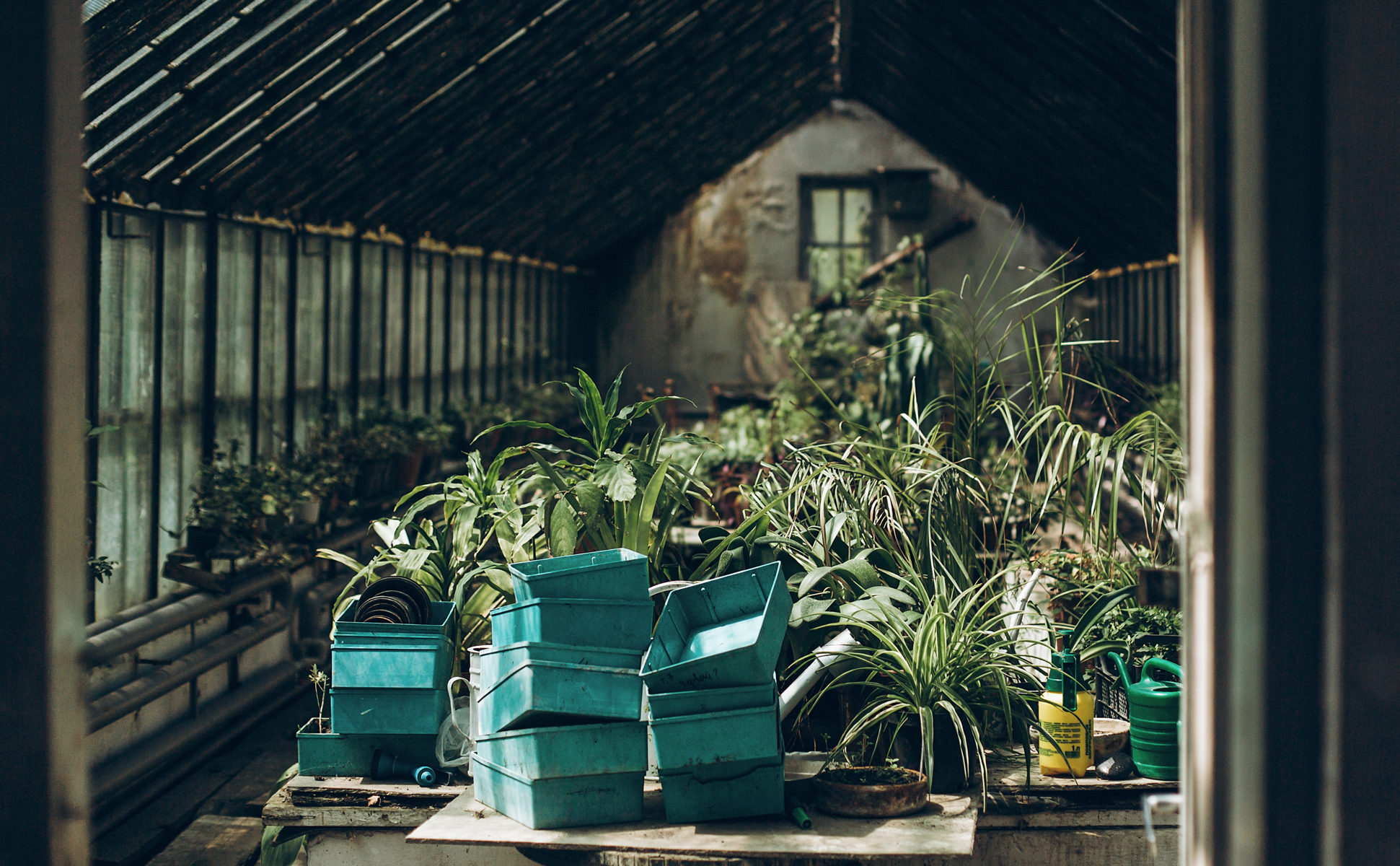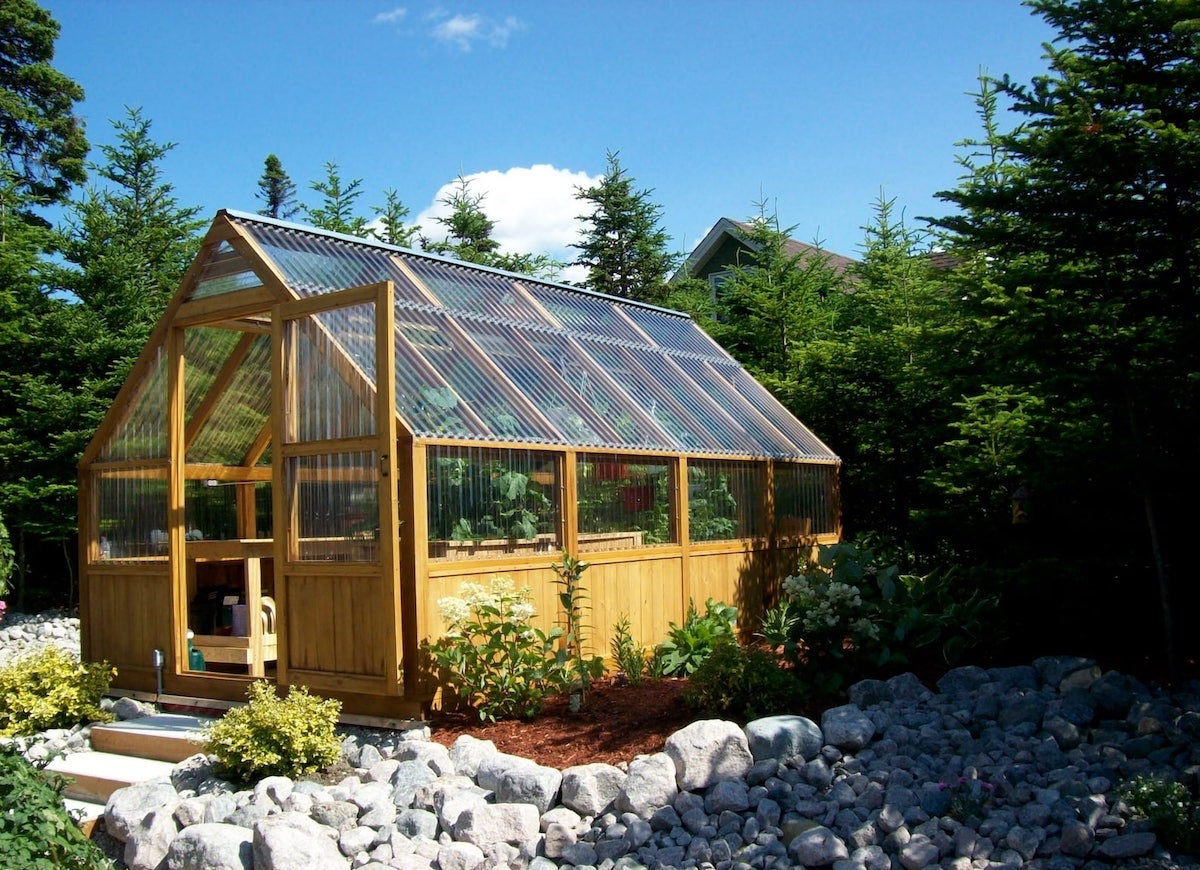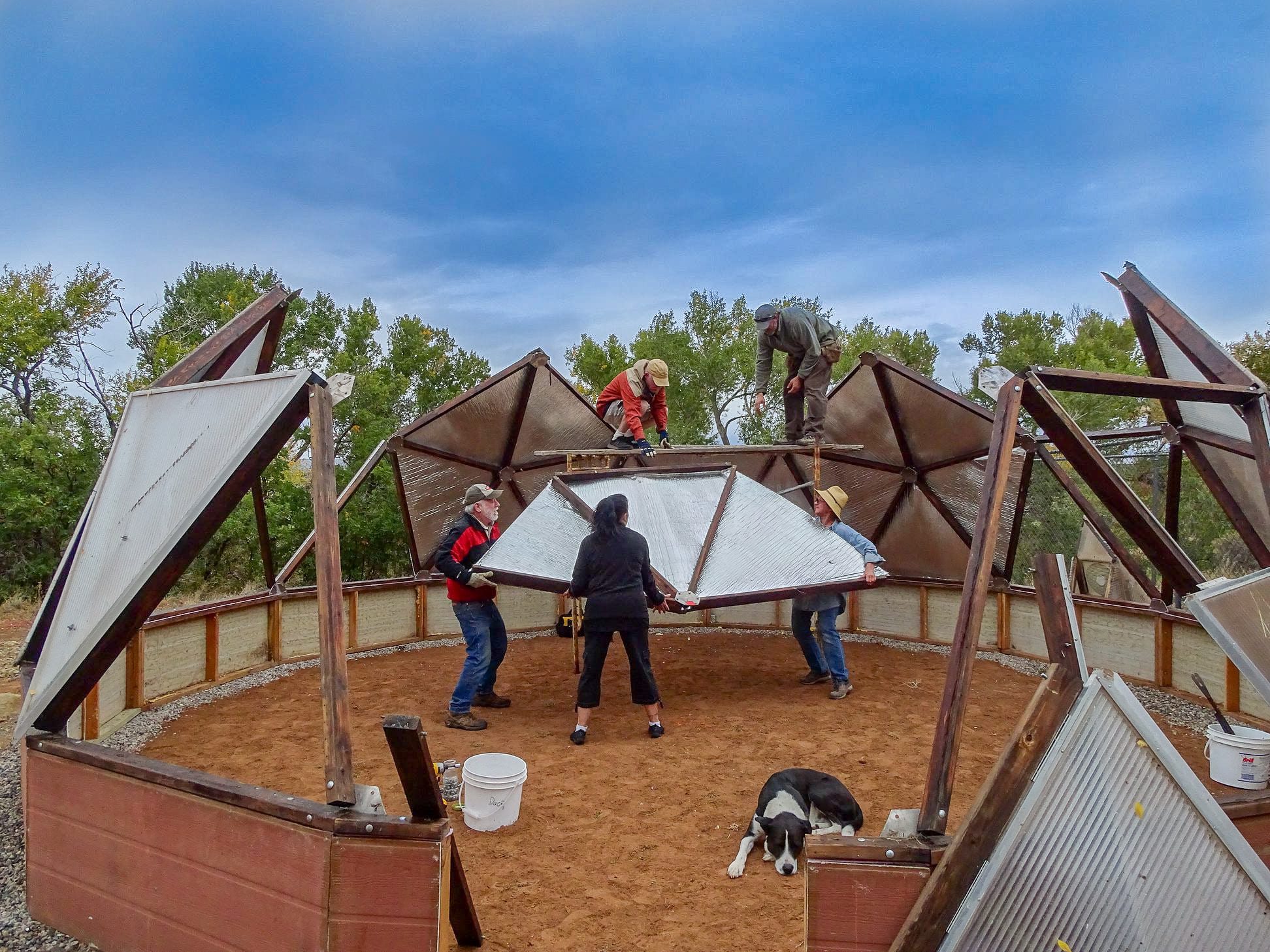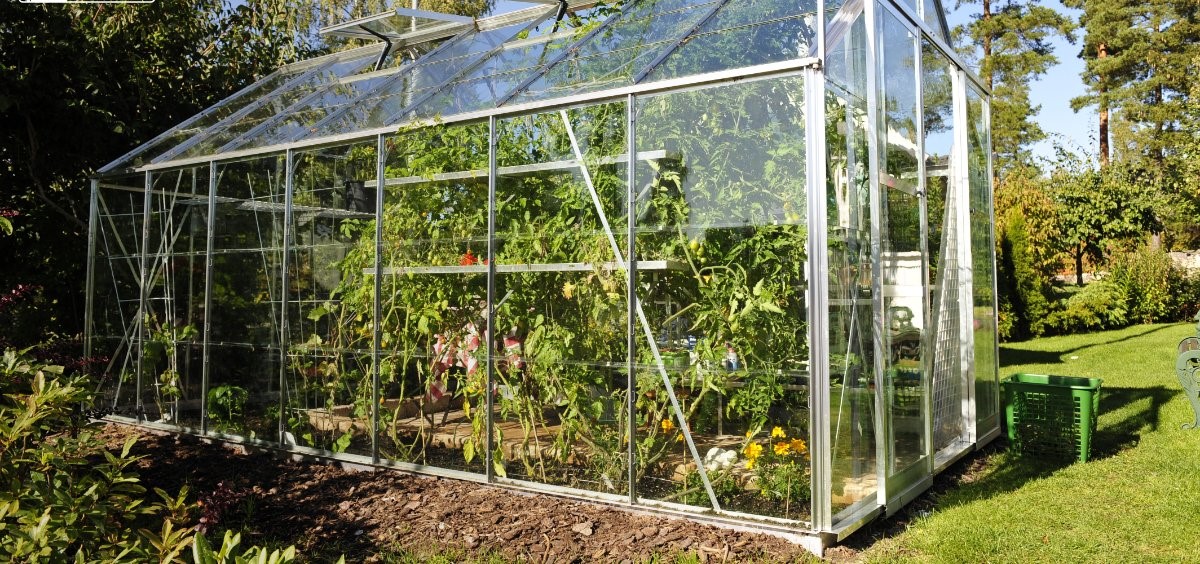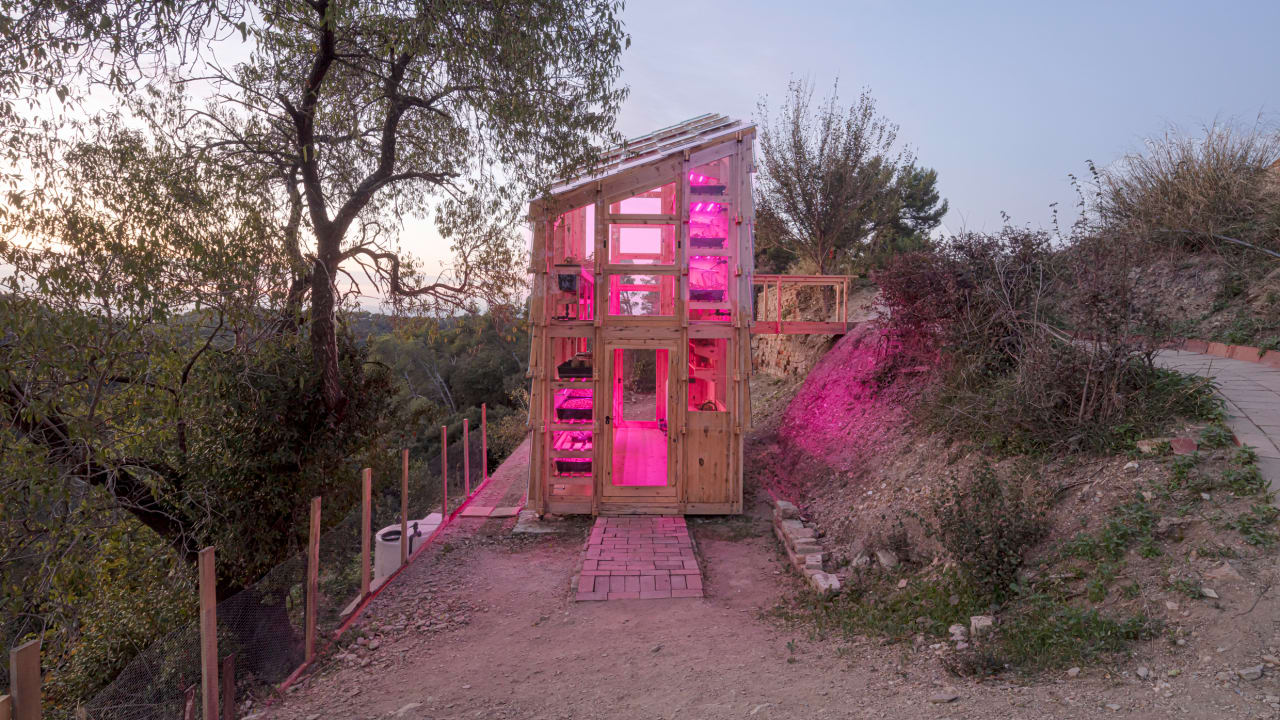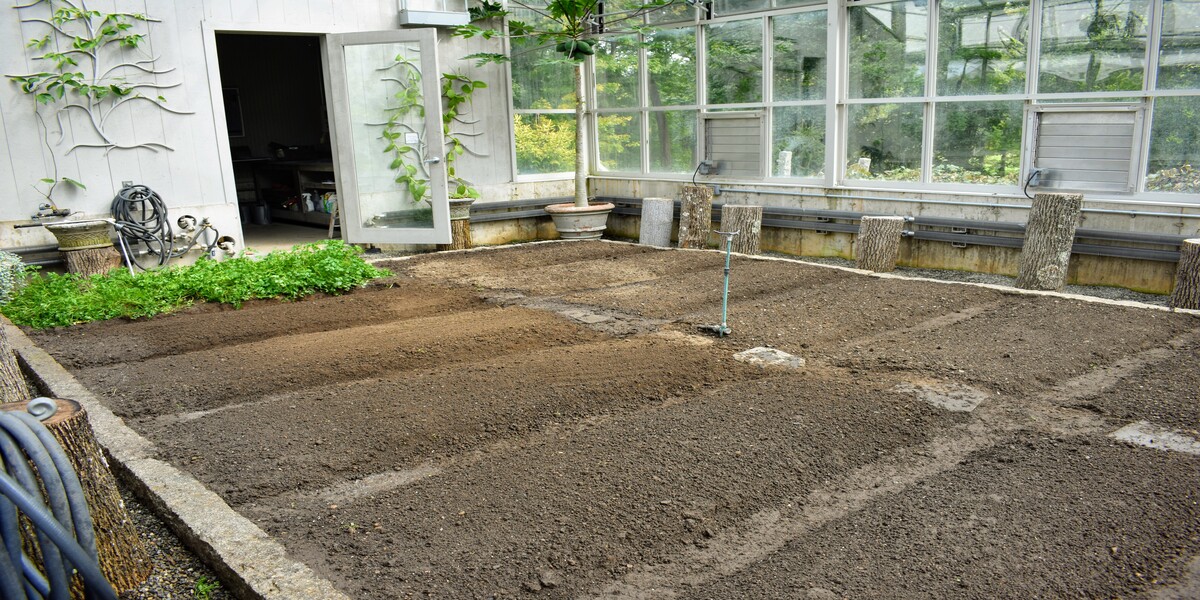Home>Gardening Techniques>DIY Projects>How To Build A High Tunnel Greenhouse
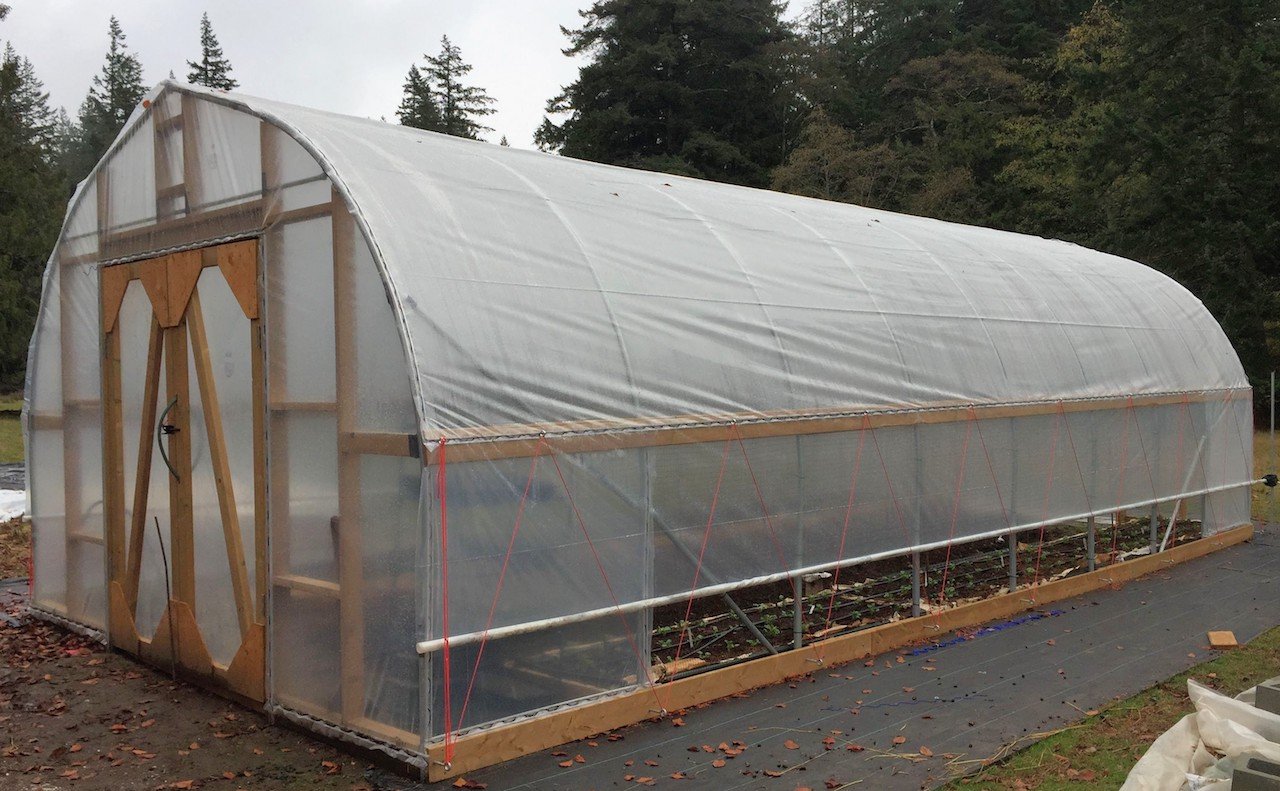

DIY Projects
How To Build A High Tunnel Greenhouse
Modified: January 22, 2024
Discover the step-by-step guide to building your own high tunnel greenhouse with this comprehensive DIY project. Create a sustainable and efficient growing space for your plants.
(Many of the links in this article redirect to a specific reviewed product. Your purchase of these products through affiliate links helps to generate commission for Chicagolandgardening.com, at no extra cost. Learn more)
Table of Contents
- Introduction
- Benefits of a High Tunnel Greenhouse
- Choosing the Right Location
- Designing and Planning the High Tunnel Greenhouse
- Selecting Materials and Tools
- Building the Frame
- Installing the Covering
- Ventilation and Airflow
- Irrigation and Watering Systems
- Temperature and Humidity Control
- Planting and Maintaining the High Tunnel Greenhouse
- Pest and Disease Management
- Harvesting and Extending the Growing Season
- Conclusion
Introduction
Welcome to the world of DIY projects! If you’re passionate about gardening and want to take your skills to the next level, building a high tunnel greenhouse is a fantastic way to do just that. A high tunnel greenhouse, also known as a hoop house or polytunnel, is a structure that provides a controlled environment for plants to thrive in any season. Whether you’re a seasoned gardener or a beginner, constructing your own high tunnel greenhouse can be a rewarding and fulfilling experience.
With a high tunnel greenhouse, you have the ability to extend the growing season, protect plants from harsh elements, and create an ideal environment for optimal growth. It allows you to grow a wide variety of vegetables, herbs, flowers, and even exotic plants that may not otherwise survive in your region.
In this comprehensive guide, we will explore the step-by-step process of building a high tunnel greenhouse. From choosing the right location to designing the structure, selecting materials and tools, to planting and maintaining, we’ll cover everything you need to know to create a successful high tunnel greenhouse of your own.
So, get ready to unleash your inner DIY enthusiast and embark on a journey that will transform your gardening experience. Let’s dive in and discover the incredible benefits of building a high tunnel greenhouse!
Benefits of a High Tunnel Greenhouse
A high tunnel greenhouse offers numerous advantages that can greatly enhance your gardening experience. Here are some key benefits:
- Extended Growing Season: One of the biggest advantages of a high tunnel greenhouse is the ability to extend the growing season. By creating a controlled environment, you can start planting earlier in the spring and continue growing well into the fall or even winter. This means you can enjoy fresh produce and beautiful flowers all year round.
- Protection from Harsh Weather: A high tunnel greenhouse provides a layer of protection for your plants against extreme weather conditions. It shields them from heavy rains, strong winds, frost, and even hail. This means you can safeguard your crops and prevent potential damage, ensuring a higher yield and healthier plants.
- Optimal Growing Conditions: With a high tunnel greenhouse, you have the power to regulate the temperature, humidity, and airflow, creating an ideal growing environment for your plants. This level of control allows you to optimize conditions for specific crops and varieties, resulting in faster growth, increased yield, and healthier plants.
- Protection from Pests and Diseases: The enclosed environment of a high tunnel greenhouse acts as a barrier against pests and diseases. It keeps out common garden intruders such as rabbits, deer, and insects, reducing the risk of damage and the need for harmful pesticides. Additionally, the controlled environment minimizes the spread of plant diseases, ensuring the health and vitality of your garden.
- Versatility and Flexibility: A high tunnel greenhouse can be used for various purposes. It can serve as a traditional garden, allowing you to grow a wide range of crops. Alternatively, you can use it as a nursery to start seedlings or propagate plants. It can even be transformed into a cozy space for relaxation and enjoyment, creating a tranquil haven in your backyard.
Overall, a high tunnel greenhouse empowers you to take control of your gardening efforts, providing a platform for year-round production, protection, and experimentation. It offers unparalleled versatility and the opportunity to explore a wider range of plant species, ensuring a bountiful and rewarding gardening experience.
Choosing the Right Location
The location of your high tunnel greenhouse plays a crucial role in its overall success. Here are some factors to consider when choosing the right location:
- Sunlight: Select a site that receives ample sunlight throughout the day. Most plants require at least 6-8 hours of direct sunlight for optimal growth. Avoid areas that are shaded by buildings, trees, or other structures that may obstruct sunlight.
- Orientation: Consider the orientation of your high tunnel greenhouse. Ideally, it should be positioned in an east-west direction, with the longest walls facing south. This allows for maximum exposure to the sun’s rays, especially during the winter months when sunlight is limited.
- Drainage: Ensure that the chosen site has proper drainage to prevent waterlogging. A high tunnel greenhouse should be located on a slightly elevated area to allow excess water to drain away from the structure. Avoid areas prone to flooding or with poor soil drainage.
- Wind Exposure: Assess the wind patterns in your area and choose a location that provides some natural wind protection. Consider nearby buildings, trees, or natural topography that can act as windbreaks. Excessive wind can damage the structure and impact plant growth.
- Accessibility: Think about the convenience and accessibility of your high tunnel greenhouse. Locate it in a spot that is easily accessible for maintenance, watering, and harvesting. Also, consider proximity to a water source and potential electrical connections if needed.
Additionally, it’s essential to comply with any local zoning regulations or restrictions regarding the construction of a high tunnel greenhouse. Check with your local authorities to ensure that you are in compliance with any necessary permits or guidelines.
By taking these factors into account, you can select the ideal location for your high tunnel greenhouse, creating the optimal conditions for successful plant growth and overall functionality.
Designing and Planning the High Tunnel Greenhouse
Designing and planning your high tunnel greenhouse is a crucial step that will ensure its functionality, efficiency, and durability. Consider the following factors when designing and planning your structure:
- Size and Layout: Determine the size of your high tunnel greenhouse based on the available space and your gardening needs. Consider the types of plants you’ll be growing and their space requirements. Additionally, plan the layout to maximize the use of space, ensuring easy access and efficient use of resources.
- Frame Material: Select the appropriate frame material for your high tunnel greenhouse. Common options include galvanized steel, PVC pipes, or wooden frames. Each material has its own pros and cons in terms of cost, durability, and ease of construction. Choose a material that suits your budget and specific needs.
- Covering Material: Choose a suitable covering material for your high tunnel greenhouse. Polyethylene plastic is a popular choice due to its affordability and flexibility. However, there are also options like polycarbonate sheets or greenhouse film, which offer enhanced insulation and durability. Consider your climate, budget, and desired level of insulation when selecting the covering material.
- Foundation: Decide on the type of foundation for your high tunnel greenhouse. Depending on the size and weight of the structure, options include a concrete slab, treated lumber, or simply anchoring the frame directly into the ground. Choose a foundation that provides stability and ensures proper drainage.
- Doors and Ventilation: Incorporate doors and ventilation systems into your high tunnel greenhouse design to provide proper airflow and temperature control. Consider the number and size of doors based on the ease of access and movement of larger equipment if needed. Install vents or windows to allow for passive and/or active ventilation.
It’s also worth considering additional features such as gutter systems for rainwater collection, shading options for managing excessive sunlight, and automation systems for temperature and humidity control.
Before proceeding with construction, it’s advisable to create a detailed plan, including drawings and measurements of your high tunnel greenhouse design. This will help you visualize the final structure and ensure a smooth construction process.
By carefully designing and planning your high tunnel greenhouse, you will create a functional and efficient space that meets your gardening needs while providing optimal growing conditions for your plants.
Selecting Materials and Tools
Choosing the right materials and tools is crucial for the construction of a sturdy and long-lasting high tunnel greenhouse. Here are some considerations when selecting materials and tools:
- Frame Materials: Depending on your budget and preference, different materials can be used for the frame of your high tunnel greenhouse. Galvanized steel offers strength and durability, while PVC pipes are lightweight and affordable. Wood is another option, providing a more natural and aesthetic appeal. Consider the pros and cons of each material and choose the one that suits your needs.
- Covering Materials: The covering material of your high tunnel greenhouse plays a significant role in its insulation and durability. Polyethylene plastic is a popular choice due to its affordability and flexibility. Polycarbonate sheets offer higher insulation and impact resistance. Greenhouse film is another option that provides UV protection and heat retention. Consider the climate in your area and choose the covering material that offers the best combination of insulation and longevity.
- Fasteners: Select the appropriate fasteners to secure the frame and covering. Depending on the material of your frame, options include screws, bolts, brackets, or specialized clips. Choose quality fasteners that are resistant to corrosion and ensure a secure and sturdy construction.
- Tools: Assemble a set of tools that will help you in the construction process. Some essential tools include a measuring tape, level, hammer, drill, screwdriver, wrenches, and wire cutters. Depending on the specifics of your design, you may also need additional tools such as a PVC cutter or a metal saw. Choose tools that are suitable for the materials you are working with and ensure you have the necessary safety equipment as well.
- Irrigation Systems: Consider the type of irrigation system you’ll be using in your high tunnel greenhouse. Options include drip irrigation, soaker hoses, or overhead sprinklers. Select a system that suits your plants’ watering needs, conserves water, and is compatible with your growing medium.
When choosing materials and tools, prioritize quality and durability. Investing in high-quality materials and tools will result in a more resilient and efficient high tunnel greenhouse.
Don’t forget to check local building codes and regulations to ensure compliance with any specific requirements related to materials or tools used in constructing high tunnel greenhouses.
Building the Frame
The frame is the backbone of your high tunnel greenhouse and provides the structure’s stability and strength. Follow these steps to build the frame:
- Prepare the Site: Clear the area where you will be constructing the high tunnel greenhouse. Remove any debris and level the ground if necessary. Ensure that the site is properly drained to prevent water accumulation around the frame.
- Measure and Mark: Measure and mark the dimensions of your high tunnel greenhouse on the ground. Use stakes or string to outline the perimeter, ensuring accuracy and straight lines.
- Install Corner Posts: Place corner posts at each corner of the marked area. The posts can be made of wood, metal, or PVC, depending on the materials you’ve chosen for your frame. Make sure the posts are firmly secured in the ground, either by digging holes or using anchors.
- Create the Arch Supports: Depending on the design of your high tunnel greenhouse, you may need to create additional supports for the arches. These supports can be made of wood, metal pipes, or PVC. Space them evenly along the length of the greenhouse, ensuring they are securely attached to the corner posts.
- Construct the Arch Frames: Use the selected frame material (such as galvanized steel or PVC pipes) to create the arches. Bend the material into the desired shape and attach them to the corner posts and the arch supports. Secure the arch frames in place using fasteners, ensuring they are level and evenly spaced.
- Install Cross Bracing: For added stability, install cross braces between the arches. These can be made of wood or metal and should be placed diagonally across the arches, forming an “X” shape. Attach the cross braces securely to the arch frames and corner posts.
- Reinforce the Structure: Depending on the size and specific requirements of your high tunnel greenhouse, additional reinforcements may be necessary. This can include horizontal support beams, additional corner bracing, or trusses. Ensure that all reinforcements are properly installed and securely attached to the frame.
Throughout the construction process, regularly check for levelness, squareness, and overall stability of the frame. Make any necessary adjustments to ensure a solid and sturdy structure.
With the frame constructed, you have laid the foundation for the rest of the high tunnel greenhouse building process. Now, it’s time to move on to installing the covering and adding the finishing touches.
Installing the Covering
Once the frame of your high tunnel greenhouse is built, the next step is to install the covering. The covering material plays a crucial role in protecting your plants and creating the ideal climate within the structure. Follow these steps to properly install the covering:
- Measure and Cut: Measure the dimensions of your high tunnel greenhouse and cut the covering material to size. Leave some extra material on all sides for securing and fastening.
- Secure the Ends: Start by securing the covering material to one end of the high tunnel greenhouse. Use clips, nails, or staples to secure the material to the frame. Ensure that it is taut and smooth to prevent any sagging.
- Pull Tight and Fasten: Slowly and carefully pull the covering material across the frame to the opposite end. Ensure that it is evenly stretched and tight. Secure the material to the frame at regular intervals, ensuring it is firmly and securely fastened.
- Trim Excess Material: Once the covering material is securely attached, carefully trim any excess material using a sharp knife or scissors. Be cautious not to cut too close to the frame, maintaining a small overhang for added protection.
- Secure Sides: Depending on the design of your high tunnel greenhouse, you may need to secure the sides of the covering material as well. This can be done using clips, bungee cords, or specialized fastening systems. Ensure that the sides are properly sealed and anchored to prevent any drafts or exposure.
- Install Doors and Vents: Cut openings in the covering material for doors and vents, if desired. Install doors with hinges and handles, ensuring they seal tightly when closed. Place vents in strategic locations to allow for proper airflow and temperature control within the high tunnel greenhouse.
Throughout the installation process, ensure that the covering material is smooth and free of wrinkles or creases. This will not only improve the overall appearance but also prevent potential damage to the material.
Properly installing the covering is essential to maximize the efficiency and effectiveness of your high tunnel greenhouse. It will provide the necessary protection and insulation for your plants, creating a favorable and controlled growing environment.
Ventilation and Airflow
Proper ventilation and airflow are crucial for maintaining a healthy and thriving environment within your high tunnel greenhouse. Good airflow helps regulate temperature, humidity, and carbon dioxide levels, preventing the buildup of excessive heat, moisture, and stagnant air. Here are some key considerations for ventilation and airflow:
- Natural Ventilation: Utilize natural ventilation by incorporating doors, windows, or vents that can be opened and closed. This allows for passive airflow, taking advantage of breezes and air pressure differentials. Place vents strategically to promote cross-ventilation and ensure even airflow throughout the structure.
- Exhaust Fans: Install exhaust fans in your high tunnel greenhouse to facilitate airflow and remove excess heat. Exhaust fans help control the temperature during warmer months and prevent heat stress on your plants. Position the fans strategically to expel hot air and promote fresh air intake.
- Hinged or Roll-Up Sides: Consider using hinged or roll-up sides for your high tunnel greenhouse. These allow for easy adjustment of the side panels to control airflow and temperature. Roll-up sides are particularly useful during hot summer months, allowing for increased air movement and cooling.
- Shading Structures: Install shading structures or shade cloths above or around your high tunnel greenhouse. These can help reduce excessive sunlight and heat, improving airflow and preventing temperature spikes. Use adjustable shading options to allow for fine-tuning based on the needs of your plants.
- Fans and Circulation: Use circulating fans or oscillating fans within your high tunnel greenhouse to improve airflow. Fans promote air movement, prevent stagnant areas, and help strengthen plant stems. Ensure that fans are placed strategically to evenly distribute airflow without causing direct drafts on your plants.
- Monitoring and Adjustments: Regularly monitor the temperature and humidity levels within your high tunnel greenhouse. Make adjustments to ventilation, airflow, and shading as needed based on the specific requirements of your plants and the prevailing weather conditions.
Remember that proper ventilation and airflow are essential for preventing humidity-related diseases, mold, and pest problems. They also play a crucial role in pollination by facilitating the movement of airborne pollen.
By prioritizing ventilation and airflow in your high tunnel greenhouse, you can create a favorable growing environment that promotes healthy plant growth, minimizes the risk of diseases, and maximizes your yield.
Irrigation and Watering Systems
Proper irrigation and watering are essential for the success of your plants within a high tunnel greenhouse. It’s important to provide consistent and adequate moisture to promote healthy growth and prevent water stress. Here are some key considerations for irrigation and watering systems:
- Drip Irrigation: Drip irrigation is a popular choice for high tunnel greenhouses. It delivers water directly to the roots of plants, minimizing water waste and reducing the risk of diseases caused by excessive moisture on leaves. Drip irrigation systems are efficient, allow for precise control of water flow, and can be automated for convenience.
- Soaker Hoses: Soaker hoses are another option for water delivery within a high tunnel greenhouse. These porous hoses release water gradually along their length, effectively irrigating the soil around your plants. Soaker hoses are affordable, easy to install, and allow for targeted watering to specific areas or plants.
- Overhead Sprinklers: Overhead sprinklers are suitable for larger high tunnel greenhouses or when uniform coverage is required. These systems distribute water through sprinkler heads installed in the ceiling or along support beams. Overhead sprinklers can provide good coverage but may result in higher water consumption and increased humidity within the structure.
- Automation and Timers: Consider automating your irrigation system using timers or sensors. This allows for consistent watering schedules and ensures that your plants receive water even if you are not present. Automating the irrigation system can help save time and prevent over or under-watering.
- Monitor Soil Moisture: Regularly monitor the moisture levels in the soil to avoid under or overwatering. Use a soil moisture meter or conduct manual checks by feeling the soil with your fingers. Adjust your watering schedule and techniques accordingly to maintain optimal moisture levels for your specific plants.
- Catchment Systems: Consider implementing a catchment system to collect and utilize rainwater within your high tunnel greenhouse. This allows you to conserve water and reduce dependency on external sources. Install gutters and downspouts to capture rainwater, and direct it to storage tanks or containers for future use.
Remember to tailor your irrigation and watering approach based on the specific needs of your plants, the growing medium used, and the prevailing climate conditions. Provide regular and consistent water, but be cautious not to overwater, as this can lead to root rot and other issues.
By implementing an efficient irrigation and watering system, you can ensure that your plants receive the right amount of moisture, promoting healthy growth and maximizing the productivity of your high tunnel greenhouse.
Temperature and Humidity Control
Effective temperature and humidity control is crucial for creating an optimal growing environment in your high tunnel greenhouse. Maintaining proper levels of temperature and humidity can help promote healthy plant growth, prevent diseases, and maximize yields. Here are some key considerations for temperature and humidity control:
- Ventilation: Adequate ventilation plays a crucial role in temperature and humidity control. Proper airflow helps regulate temperature by removing excess heat and replenishing fresh air. It also helps reduce humidity levels by allowing moisture to evaporate. Utilize natural ventilation through windows, vents, or roll-up sides, and consider incorporating exhaust fans for additional airflow.
- Shading: Install shading structures or shade cloth to mitigate excessive sunlight and heat. Shading can help maintain cooler temperatures and reduce the risk of heat stress on your plants. Choose shading materials that provide the appropriate level of shading while still allowing for sufficient light penetration.
- Insulation: Insulating your high tunnel greenhouse can help regulate temperatures, especially during colder seasons. Consider using double-layered coverings or installing insulation materials, such as bubble wrap or polystyrene sheets. Insulation helps retain heat, maintain consistent temperatures, and reduce fluctuations that can be detrimental to plant growth.
- Heating Systems: In colder regions, consider installing a heating system to maintain appropriate temperatures during the winter months. Options include gas, electric, or propane heaters. Choose a heating system suitable for the size of your high tunnel greenhouse and ensure proper ventilation to prevent carbon monoxide buildup.
- Cooling Systems: In hotter regions, employ cooling systems to regulate temperatures during the summer months. Options include evaporative cooling pads, misting systems, or high-pressure fogging. These systems help reduce temperatures by evaporating water, creating a cool and humid environment.
- Humidity Control: Controlling humidity levels is crucial for preventing diseases and ensuring optimal plant health. Utilize proper ventilation to allow excess moisture to escape and fresh air to circulate. Dehumidifiers or fans can be used to lower humidity levels, while misting systems or damp surfaces can be employed to increase humidity when necessary.
Regular monitoring of temperature and humidity levels within your high tunnel greenhouse is essential. Use thermometers and hygrometers to measure and assess the conditions. Make adjustments to ventilation, shading, and other systems as needed to maintain the ideal temperature and humidity ranges for your specific plants.
By effectively managing temperature and humidity levels, you can create a favorable environment for your plants, ultimately leading to healthier growth, optimal yields, and a thriving high tunnel greenhouse.
Planting and Maintaining the High Tunnel Greenhouse
Planting and maintaining your high tunnel greenhouse is an ongoing process that requires attention and care. By following proper planting and maintenance practices, you can ensure the health and productivity of your plants. Here are some key guidelines to consider:
- Soil Preparation: Start by preparing the soil in your high tunnel greenhouse. Test the soil to assess its nutrient levels and pH, and make any necessary amendments to create the ideal growing conditions for your plants. Incorporate organic matter such as compost or aged manure to improve soil quality and fertility.
- Choosing the Right Plants: Select plants that are well-suited for greenhouse growing and appropriate for the specific conditions within your high tunnel. Consider factors such as temperature, humidity, sunlight requirements, and available space. Choose disease-resistant varieties whenever possible to minimize the risk of pests and diseases.
- Planting Techniques: Follow appropriate planting techniques to ensure the success of your plants. Provide adequate spacing according to the specific requirements of each plant. Take into consideration their mature size and allow for proper air circulation and light penetration. Plant at the appropriate depth and water thoroughly after planting.
- Watering and Fertilizing: Develop a regular watering schedule to ensure consistent moisture levels for your plants. Use your chosen irrigation system or water by hand, ensuring that the soil is adequately saturated. Monitor the soil moisture levels and adjust the watering frequency as needed. Additionally, fertilize your plants regularly with a balanced fertilizer to provide essential nutrients.
- Weeding and Mulching: Regularly remove weeds from your high tunnel greenhouse to prevent competition for nutrients and water. Mulch the soil with organic materials such as straw or wood chips to suppress weeds, retain moisture, and regulate soil temperature. Mulching also helps prevent soil erosion and adds organic matter to the soil as it breaks down.
- Pruning and Training: Prune and train your plants as they grow to promote proper growth habits, increase airflow, and maximize yields. Remove any dead or diseased plant parts and train vining plants to trellises or support systems. This helps manage plant size, prevents overcrowding, and optimizes light penetration and access to nutrients.
- Pest and Disease Management: Regularly monitor your plants for pests and diseases. Implement preventive measures such as good sanitation practices, proper ventilation, and regular inspections. Use organic pest control methods whenever possible, such as introducing beneficial insects or using natural repellents. If necessary, employ appropriate organic or integrated pest management techniques to minimize damage to your plants.
- Harvesting: Regularly harvest your crops at their peak maturity to maintain plant vigor and encourage continuous production. Harvesting at the right time ensures the best flavor and quality of your fruits, vegetables, or herbs. Properly clean and store harvested produce to preserve freshness and extend shelf life.
Regularly observe and assess the overall health and performance of your plants. Keep records of planting dates, fertilizing schedules, and pest and disease control measures. This information will help you track progress, make adjustments, and learn from each growing season to improve future planting and maintenance practices.
By planting and maintaining your high tunnel greenhouse with care and diligence, you can create a thriving and productive environment that yields bountiful harvests of healthy and nutritious plants.
Pest and Disease Management
Pests and diseases can pose a significant threat to the health and productivity of plants in a high tunnel greenhouse. Implementing effective pest and disease management strategies is crucial in maintaining a thriving and pest-free environment. Here are some key considerations for managing pests and diseases:
- Preventive Measures: Begin by implementing preventive measures to minimize the risk of pests and diseases. Practice good sanitation by regularly cleaning and removing plant debris, fallen leaves, and weeds. Keep the high tunnel greenhouse tidy and free of hiding places for pests. Inspect new plants before introducing them to the greenhouse to avoid introducing infestations.
- Proper Ventilation: Adequate ventilation is essential for preventing the buildup of moisture and reducing the risk of fungal diseases. Proper airflow helps keep the plants dry and promotes a healthy growing environment. Regularly open windows, vents, or roll-up sides to ensure good air circulation.
- Biological Control: Employ biological control methods as a natural and sustainable approach to managing pests in the high tunnel greenhouse. Introduce beneficial insects, such as ladybugs or lacewings, which help control common pests like aphids or caterpillars. Nematodes can be used to target soil-dwelling pests.
- Organic Pest Control: Utilize organic pest control methods to minimize pest populations. Apply insecticidal soaps or neem oil to control soft-bodied pests, such as whiteflies or spider mites. Use sticky traps to monitor and trap flying insects. Avoid using chemical pesticides that can harm beneficial insects and disrupt the natural balance of the ecosystem.
- Integrated Pest Management (IPM): Implement an integrated pest management approach that combines preventive measures, biological control, and minimal use of least-toxic pesticides as a last resort. Regularly monitor plants for signs of pests or diseases and take appropriate action when necessary. IPM focuses on long-term solutions rather than quick fixes.
- Crop Rotation and Companion Planting: Implement crop rotation and companion planting techniques to disrupt pest life cycles and deter pests. Rotate the location of crops each season, as certain insects and diseases can build up in the soil. Plant companion plants that attract beneficial insects or have repellent properties to help keep pests at bay.
- Early Detection and Intervention: Regularly inspect plants for any signs of pest or disease infestations. Look for symptoms such as discoloration, wilting, spotting, or unusual growth. If detected early, remove and destroy affected plants or plant parts to prevent further spread. Prompt intervention can help contain and manage any issues.
- Organic Disease Control: Use organic disease control methods to manage common diseases in the high tunnel greenhouse. Apply organic fungicides, such as copper-based products or sulfur, to prevent or control fungal diseases. Practice good watering techniques by avoiding overhead watering, which can promote fungal growth.
Regular monitoring, timely intervention, and a proactive approach are essential for effective pest and disease management. By employing preventive measures, utilizing organic pest control methods, and practicing good greenhouse hygiene, you can help maintain a healthy and pest-free environment in your high tunnel greenhouse.
Harvesting and Extending the Growing Season
Harvesting is the rewarding culmination of your efforts in the high tunnel greenhouse. Proper harvesting techniques and strategies not only ensure the best flavor and quality of your crops but also allow you to extend the growing season to maximize your yield. Here are some key considerations for harvesting and extending the growing season in your high tunnel greenhouse:
- Harvest at the Right Time: Harvest crops at their peak maturity to capture the best flavor, texture, and nutritional content. Each crop has specific indicators for harvest readiness, such as color, size, or firmness. Regularly inspect your plants and harvest when they meet the desired criteria.
- Harvesting Techniques: Utilize proper harvesting techniques to minimize damage and preserve the quality of your crops. Use clean, sharp tools such as pruners or clippers to carefully harvest fruits, vegetables, or herbs. Be gentle when handling delicate crops and avoid bruising or crushing them.
- Continual Harvesting: Practice continual harvesting for crops that produce multiple harvests or have a prolonged harvest season. Regularly harvest mature crops, which encourages the development of new growth and prolongs the overall productivity of the plant. This technique applies to crops such as tomatoes, peppers, lettuce, and herbs.
- Proper Storage and Preservation: Properly store and preserve harvested crops to maintain their freshness and nutritional value. Clean and dry the produce before storing to prevent rot or spoilage. Store fruits and vegetables in appropriate conditions, such as cool and dark storage, refrigeration, or freezing, depending on the specific requirements of each crop.
- Succession Planting: Implement succession planting to extend the growing season in your high tunnel greenhouse. After harvesting a crop, promptly replant the space with a new crop that can thrive in the current season. This ensures a continuous supply of fresh produce throughout the year and maximizes the use of available growing space.
- Season Extension Techniques: Utilize season extension techniques to prolong the growing season in your high tunnel greenhouse. Install floating row covers or cold frames to protect sensitive crops from early frosts or cool temperatures. Use frost blankets or insulation during cold winter months to extend the growing season further.
- Lighting and Heat: Consider supplemental lighting and heating to extend the growing season in regions with limited sunlight or colder climates. Install grow lights to provide additional artificial light during shorter winter days. Use portable heaters or heat mats to maintain warm temperatures and protect plants from chilling damage.
- Plant Covers and Mulching: Cover crops with plant covers or row covers to protect them from pests, frost, or harsh weather conditions. Use mulch to insulate the soil and regulate temperature, especially during colder months. Mulch also helps retain moisture, suppress weeds, and improve overall soil health.
By implementing effective harvesting techniques and employing season extension practices, you can enjoy a continuous harvest from your high tunnel greenhouse, year-round or beyond the typical growing season. Experiment with different crops, explore new varieties, and embrace the opportunity to savor a wide range of delicious and fresh produce.
Conclusion
Congratulations! You have reached the end of this comprehensive guide on building and maintaining a high tunnel greenhouse. By now, you have learned about the many benefits of having a high tunnel greenhouse, from extending the growing season and protecting plants to creating optimal growing conditions and increasing yields.
We explored the importance of choosing the right location, designing the structure, selecting suitable materials and tools, and building a sturdy frame. You also gained insights into installing the covering, managing ventilation and airflow, implementing irrigation and watering systems, and controlling temperature and humidity.
Furthermore, we discussed the significance of proper planting techniques, regular maintenance, and effective pest and disease management. We also explored the importance of harvesting at the right time and employing strategies to extend the growing season.
Remember, building and maintaining a high tunnel greenhouse is an ongoing process that requires attention, care, and continuous learning. Be observant of your plants, provide the necessary care, and adapt your practices based on the specific needs of your crops and the conditions within your high tunnel greenhouse.
As you embark on your high tunnel greenhouse journey, embrace the opportunity to experiment, learn from each growing season, and enjoy the fruitful rewards of your hard work. Whether you’re a seasoned gardener or a beginner, the high tunnel greenhouse offers a rewarding and fulfilling experience that will enhance your gardening skills and provide you with an abundant and sustainable source of fresh produce.
So, roll up your sleeves, gather your tools, and let your high tunnel greenhouse adventure begin! Happy planting and successful growing!

